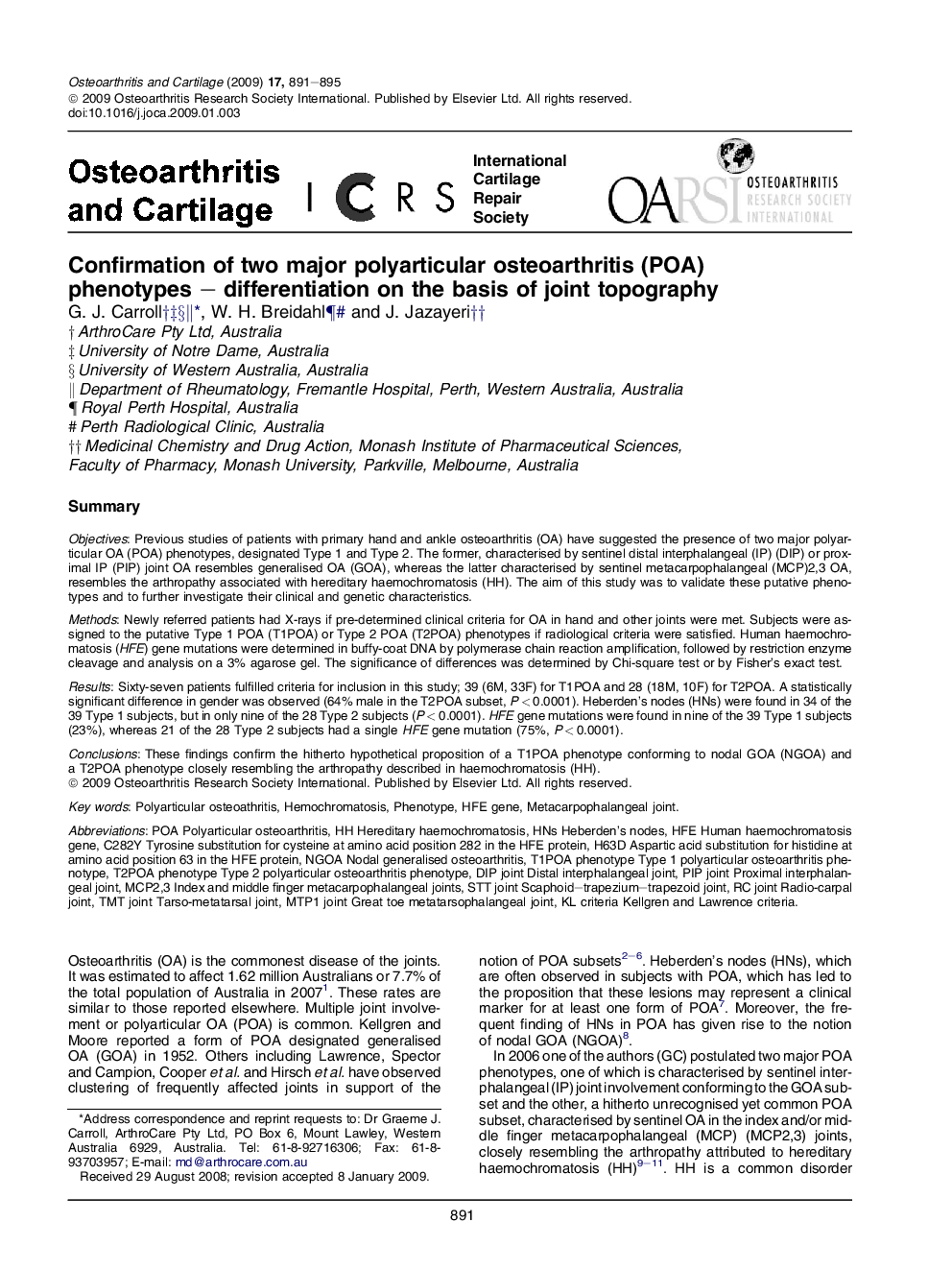| کد مقاله | کد نشریه | سال انتشار | مقاله انگلیسی | نسخه تمام متن |
|---|---|---|---|---|
| 3380927 | 1220227 | 2009 | 5 صفحه PDF | دانلود رایگان |

SummaryObjectivesPrevious studies of patients with primary hand and ankle osteoarthritis (OA) have suggested the presence of two major polyarticular OA (POA) phenotypes, designated Type 1 and Type 2. The former, characterised by sentinel distal interphalangeal (IP) (DIP) or proximal IP (PIP) joint OA resembles generalised OA (GOA), whereas the latter characterised by sentinel metacarpophalangeal (MCP)2,3 OA, resembles the arthropathy associated with hereditary haemochromatosis (HH). The aim of this study was to validate these putative phenotypes and to further investigate their clinical and genetic characteristics.MethodsNewly referred patients had X-rays if pre-determined clinical criteria for OA in hand and other joints were met. Subjects were assigned to the putative Type 1 POA (T1POA) or Type 2 POA (T2POA) phenotypes if radiological criteria were satisfied. Human haemochromatosis (HFE) gene mutations were determined in buffy-coat DNA by polymerase chain reaction amplification, followed by restriction enzyme cleavage and analysis on a 3% agarose gel. The significance of differences was determined by Chi-square test or by Fisher's exact test.ResultsSixty-seven patients fulfilled criteria for inclusion in this study; 39 (6M, 33F) for T1POA and 28 (18M, 10F) for T2POA. A statistically significant difference in gender was observed (64% male in the T2POA subset, P < 0.0001). Heberden's nodes (HNs) were found in 34 of the 39 Type 1 subjects, but in only nine of the 28 Type 2 subjects (P < 0.0001). HFE gene mutations were found in nine of the 39 Type 1 subjects (23%), whereas 21 of the 28 Type 2 subjects had a single HFE gene mutation (75%, P < 0.0001).ConclusionsThese findings confirm the hitherto hypothetical proposition of a T1POA phenotype conforming to nodal GOA (NGOA) and a T2POA phenotype closely resembling the arthropathy described in haemochromatosis (HH).
Journal: Osteoarthritis and Cartilage - Volume 17, Issue 7, July 2009, Pages 891–895